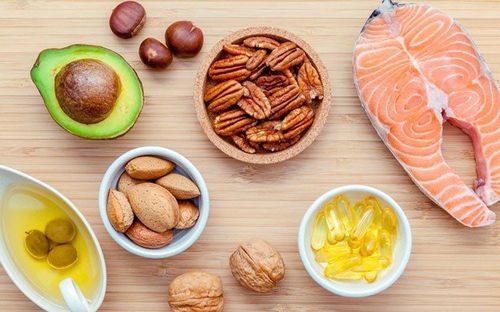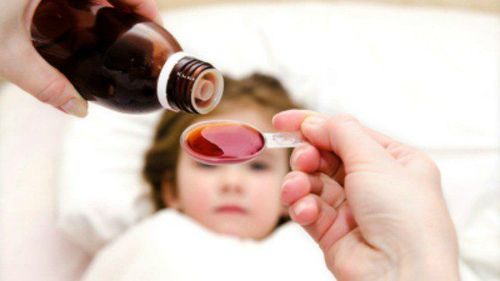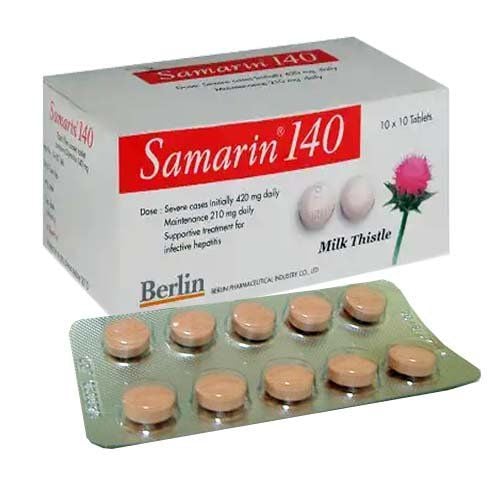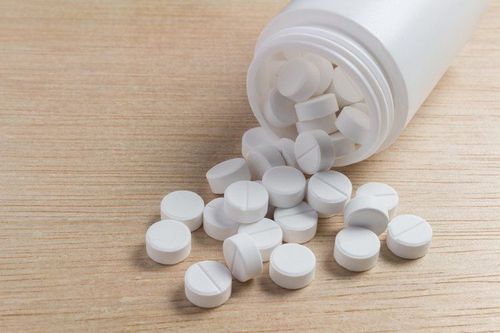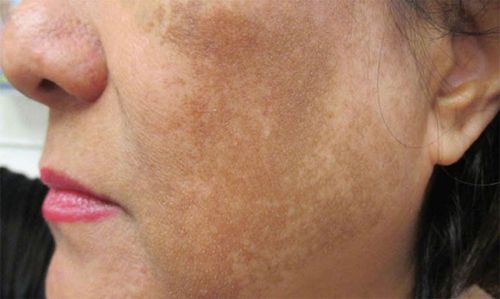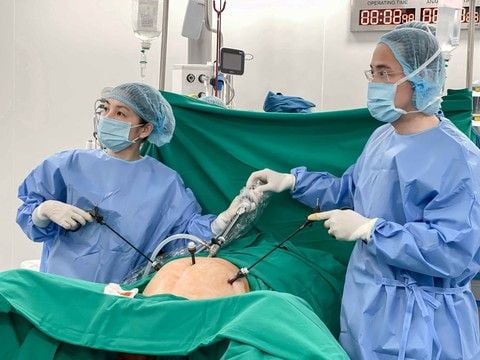The article was professionally consulted by MSc, MD. Nguyen Thi Ngoc - General Internal Medicine - Endocrinologist - Department of Examination & Internal Medicine - Vinmec Central Park International General Hospital. The doctor has over 10 years of experience studying, researching, and working in endocrinology.
Bilirubin is the main bile pigment formed from heme degradation in red blood cells. Bilirubin blood test is a special test necessary to assess human health status, helping doctors diagnose and treat diseases effectively.
1. Normal Bilirubin test results
- Total Bilirubin
Newborns: < 10 mg/dl or < 171μmol/L.
Over 1 month: 0.3 – 1.2 mg/dl or 5.1 – 20.5 μmol/L.
Adults: 0.2 – 1.0 mg/dL or 3.4 – 17.1 μmol/L. - Direct bilirubin
Normal: 0 – 0.4 mg/dl or 0 - 7 μmol/L - Indirect bilirubin
Normal: 0.1 -1.0 mg/dL or 1 - 17 μmol/L - Direct bilirubin/Total bilirubin ratio
Normal: < 20%.
2. Factors affecting Bilirubin test results
Results will vary slightly depending on the laboratory and adult men. In the case of women and children, the results may be slightly different because the results are affected by certain foods, medication, or heavy exercise.
Medicines that can also cause lower than normal bilirubin levels include barbiturates, caffeine, penicillin, high doses of salicylates, atazanavir (an anti-HIV drug that can increase indirect bilirubin levels), citrates, corticosteroids, ethanol, penicillin, proteins, salicylates, urea, etc.
Medications that cause high bilirubin levels include: antibiotics, some birth control pills, diazepam (Valium), flurazepam, indomethacin (Indocin), and phenytoin (Dilantin), adrenaline, allopurinol, antimalarial drugs, vitamin C, azathioprine, chlorpropamide, cholinergic drugs, codeine, dextran, diuretics, isoproterenol, levodopa, MAO inhibitors, meperidine, methyldopa, methotrexate, morphine, oral contraceptives, phenazopyridine, phenothiazines, quinidine, rifampin, streptomycin, theophylline, tyrosine, vitamin A...
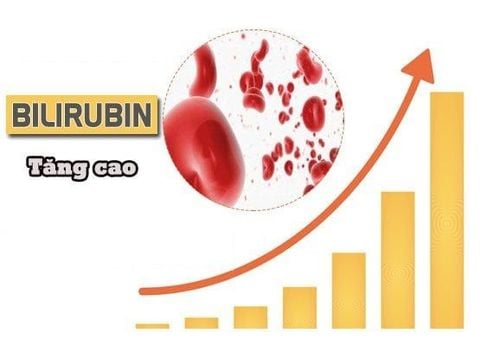
3. What are the effects of high bilirubin?
High bilirubin levels (both direct and indirect) above normal levels will increase the risk of liver disease. Usually, high bilirubin levels will show that the rate of red blood cell destruction will increase.
For newborns, quickly determining the concentration of bilirubin in the blood is also an important method. Timely testing before excess indirect bilirubin causes damage to the child's brain cells. This damage can slow intellectual development and reduce the ability to learn and develop. In addition, it can cause hearing loss, eye movement disorders, or even death...
4. What is high bilirubin?
Total bilirubin concentration can increase in these cases:
- Pregnancy
- Newborns and premature infants
- Intense physical activity
- Causes of increased unconjugated bilirubin.
- Causes of increased conjugated bilirubin
- Hypothyroidism.
Unconjugated bilirubin concentration (indirect bilirubin) can increase in these cases:
- Excessive destruction of red blood cells
- Hemolysis: malaria, Rh incompatibility of newborns, hemoglobinopathy, red blood cell enzyme deficiency, disseminated intravascular coagulation, autoimmune hemolysis.
- Ineffective erythropoiesis: Biermer's anemia.
- Massive blood transfusions.
- Splenomegaly.
- Large hematoma.
- Impaired hepatic bilirubin conjugation
- Gilbert's disease.
- Decompensated heart failure.
- Medications: Rifampicin...
- Jaundice in newborns and premature infants.
Conjugated bilirubin concentration (direct bilirubin) can increase in these cases:
- Hepatocellular disease: viral hepatitis, drug-induced hepatitis (INH, Rifampicin, Halothane, Methyldopa, Chlorpromazine, Paracetamol, Salicylate..., toxic hepatitis;
- Decompensated heart failure.
- Cirrhosis, primary biliary cirrhosis, sclerosing cholangitis
- Liver infiltration or lesions (eg, tumor pathology, liver metastasis, Wilson's disease, granulomas...).
- Congenital disorders: Dubin-Johnson disease (bilirubin excretion disorder), Rotor syndrome.
- Drugs: Chlorpromazine, barbituric, oral contraceptives, testosterone, erythromycin.
- Gallstones, acute or chronic pancreatitis, pancreatic pseudocyst in acute pancreatitis, pancreatic cancer.
- Ampullary carcinoma, biliary carcinoma, biliary stricture or obstruction.
5. Bilirubin helps differentiate jaundice

High bilirubin in the blood will penetrate the tissue, causing jaundice. Testing total bilirubin and direct bilirubin is important in the differential diagnosis of some jaundice diseases. When the total bilirubin index increases more than 2 times compared to the normal level (> 42.75 mol/l), it causes jaundice.
5.1. For jaundice due to biliary obstruction
Direct bilirubin index increases very high in the blood; total bilirubin also increases, and there is bilirubin in urine. Plasma alkaline phosphatase is the best standard to evaluate biliary obstruction; if it rises more than 5 times compared to normal, it tends to cause biliary obstruction. Jaundice due to biliary obstruction is often seen in biliary obstruction due to stones, pancreatic head tumors, and worms in the bile duct.
In extrahepatic biliary obstruction, bilirubin can gradually increase to 513 - 684 mol/l.
In intrahepatic biliary obstruction, metabolic disease, or infiltrative liver disease, plasma bilirubin is normal, but alkaline phosphatase increases.
5.2. Jaundice due to hemolysis
In hemolysis, total plasma bilirubin rarely increases more than 5 times compared to normal unless combined with liver diseases. When there is liver disease, indirect bilirubin increases very high in the blood, total bilirubin increases sometimes up to 30 - 40 times, even up to 80 times compared to normal. Urinary bilirubin is negative (with urinary urobilinogen). The ratio of direct bilirubin/total bilirubin can be used for differential diagnosis:
- Ratio < 20%: hemolysis.
- Ratio 0.2 - 0.4: shows that the disease inside the liver cells is higher than outside the liver bile ducts.
- Ratio 0.4-0.6: the disease occurs inside and outside the liver cells.
- Ratio > 0.5: the obstruction is more outside the liver than inside the liver cells.
Jaundice due to hemolysis is often seen in hemolytic jaundice in newborns (physiological jaundice), malignant malaria, venomous snake bites (cobra)...
5.3. Jaundice due to liver damage
In the case of acute viral hepatitis (infectious hepatitis), the bilirubin index increases early and appears in the urine before jaundice symptoms appear with urinary urobilinogen. When the liver is damaged, it will reduce the conversion of total bilirubin to direct bilirubin, so total bilirubin increases in the blood, but direct bilirubin decreases.
In severe liver failure and cirrhosis, direct bilirubin decreases due to reduced liver function, reducing the conjugation process with glucuronic acid.
In liver cancer, total serum bilirubin increases very high and can increase 10 - 20 times compared to normal (171- 342 mol/l).
To arrange an appointment, please call HOTLINE or make your reservation directly HERE. You may also download the MyVinmec app to schedule appointments faster and manage your reservations more conveniently.
